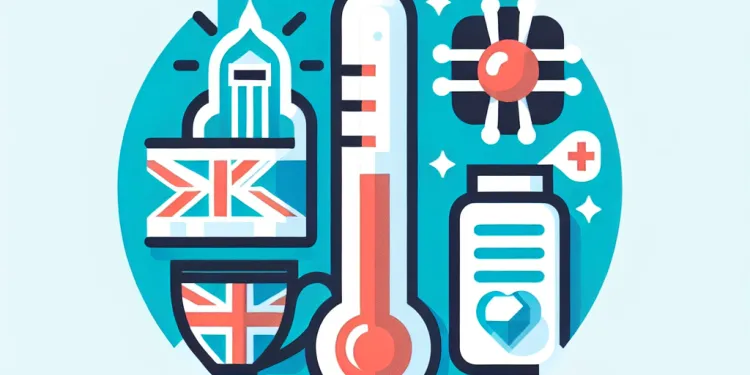
Find Help
More Items From Ergsy search
-

What should I do if someone is suffering from heatstroke?
Relevance: 100%
-

How can I prevent heatstroke during a heatwave?
Relevance: 94%
-
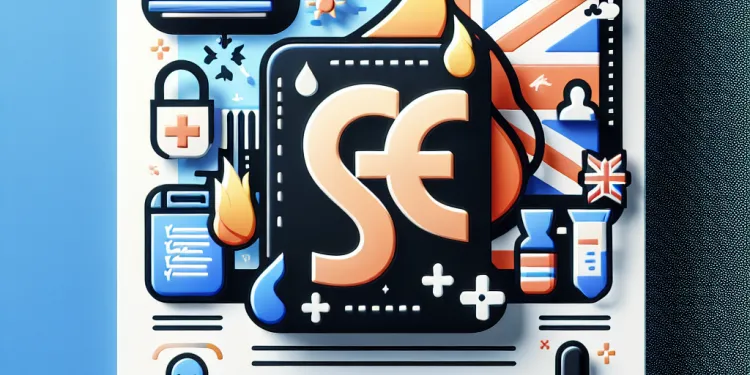
How can I prevent heat-related illnesses?
Relevance: 38%
-

How can I ensure pets are safe during a heatwave?
Relevance: 31%
-
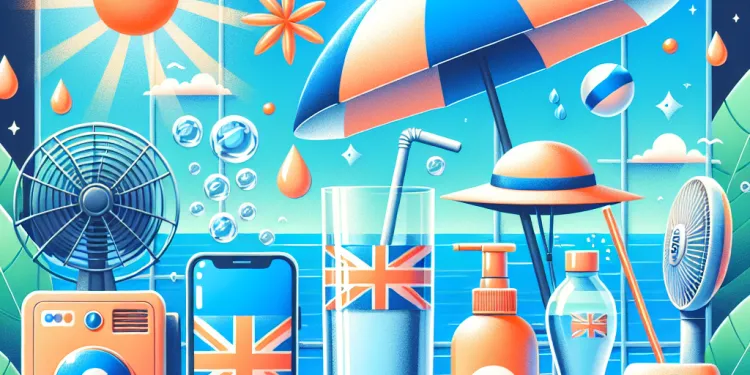
What should I do during a heatwave?
Relevance: 31%
-
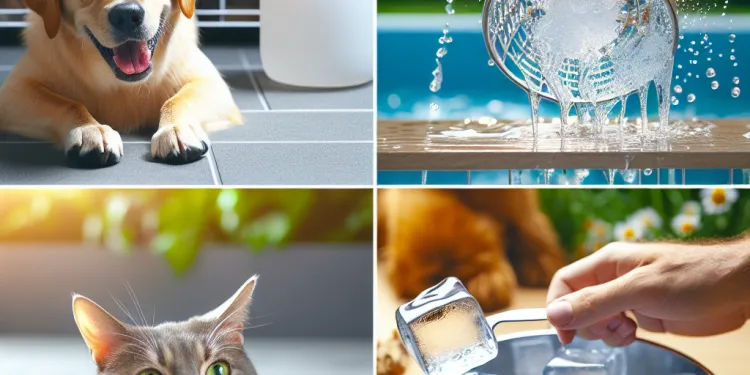
Are there any special precautions for pets during a heatwave?
Relevance: 29%
-
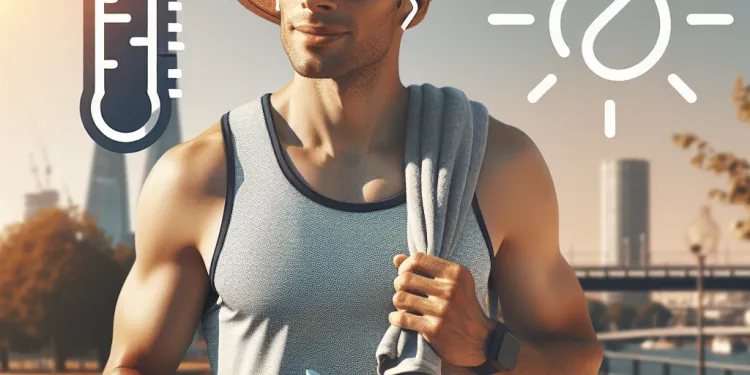
Is it safe to exercise outside during a heatwave?
Relevance: 29%
-

How can I keep children safe during a heatwave?
Relevance: 20%
-
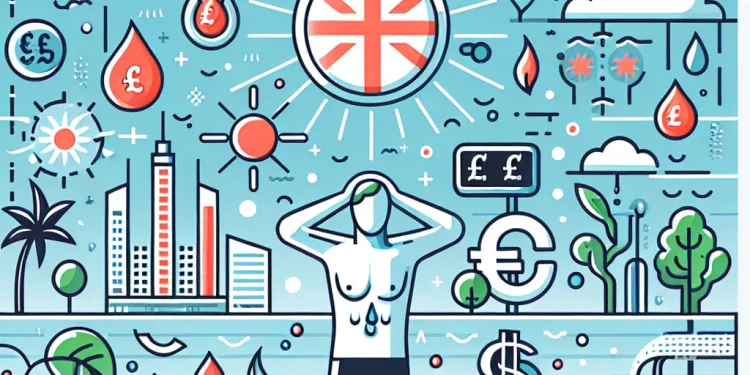
What are some signs of heat exhaustion?
Relevance: 19%
-
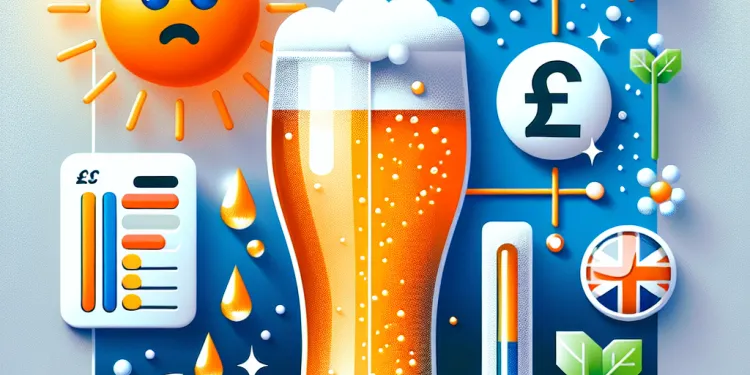
Should I avoid alcohol during a heatwave?
Relevance: 15%
-
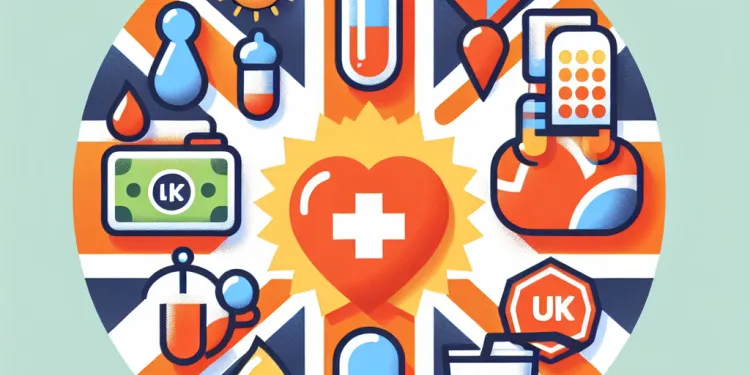
Should I take any special precautions if I have a medical condition during a heatwave?
Relevance: 14%
-

Can staying in a car during a heatwave be dangerous?
Relevance: 14%
-

What are the long-term effects of repeated heatwave exposure?
Relevance: 14%
-

Should I adjust my exercise routine during a heatwave?
Relevance: 14%
-

What topics are covered in a first aid course?
Relevance: 8%
-
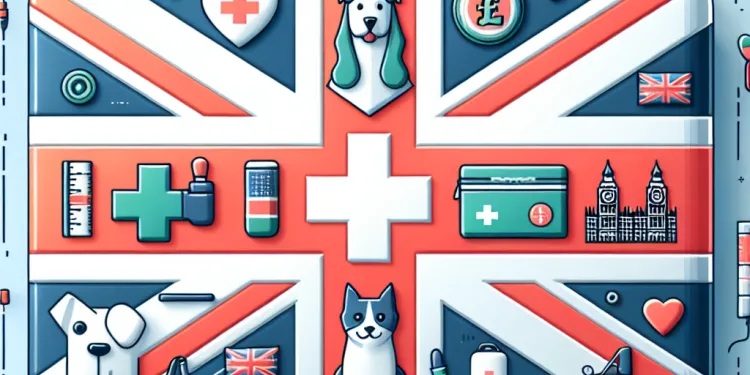
Are there first aid courses for pets?
Relevance: 7%
Understanding Heatstroke
Heatstroke is a severe heat-related illness that occurs when the body is unable to regulate its temperature effectively, resulting in the body's temperature rising to dangerous levels. It's crucial to recognize and address heatstroke promptly as it can be life-threatening. In the UK, where heatwaves are becoming more frequent, understanding how to respond can help save lives.
Recognizing the Symptoms
There are several symptoms indicative of heatstroke which you should be aware of. Key signs include a high body temperature (typically 40°C or higher), hot and flushed skin, an absence of sweating despite the heat, a rapid pulse, headache, dizziness, confusion, and in severe cases, unconsciousness. If you suspect someone is suffering from heatstroke, it's essential to act quickly.
Immediate Actions to Take
If you suspect someone is suffering from heatstroke, you need to take immediate action to cool the person down while waiting for professional medical assistance. Call emergency services immediately. While waiting for their arrival, move the person to a cooler environment, ideally indoors or in the shade. Remove any excess clothing to help reduce their body temperature.
Cooling Measures
To further aid in cooling them down, try dousing the person with cool water. You can use a sponge, a damp cloth, or even a garden hose if necessary. If possible, place the person in a shower or bathtub filled with cool, not cold, water. Fans or fanning the person can also help by circulating cool air around them. Applying ice packs to key areas such as the armpits, neck, and groin can help accelerate cooling by targeting the large blood vessels in these areas.
Monitoring the Person
While cooling the individual, monitor their condition closely. Check if they are responsive and whether their symptoms improve with each action taken. Note any changes in their level of consciousness, breathing, or body temperature. If the person is conscious and able to swallow, provide sips of cool water to keep them hydrated, but avoid alcoholic or caffeinated beverages.
When Medical Help Arrives
When medical professionals arrive, relay all actions taken and any changes observed in the person's condition. This information will assist them in administering further treatment effectively. Once the person is treated and stabilised, make sure to follow any additional advice provided by healthcare professionals to prevent future incidents, as they will offer guidance on proper hydration and cooling techniques to avoid recurrence.
Preventive Measures
To reduce the risk of heatstroke, especially during heatwaves, it's advisable to stay hydrated, wear loose-fitting and light-coloured clothing, and avoid excessive physical exertion during the hottest parts of the day. Educating others and raising awareness about heatstroke can also play an essential role in preventing it within your community.
Understanding Heatstroke
Heatstroke is when your body gets too hot and can't cool down. It is very serious and can be life-threatening. In the UK, hot weather is happening more often. Knowing what to do is very important and can save lives.
Recognizing the Symptoms
You need to know what heatstroke looks like. Signs are: - Very high body temperature (40°C or more) - Hot and red skin - Not sweating even when it's hot - Fast heartbeat - Headache - Feeling dizzy or confused - If very serious, the person might faint. Act fast if you think someone has heatstroke.
Immediate Actions to Take
If you think someone has heatstroke: - Call emergency services right away. - Move them to a cooler place, inside or in the shade. - Take off extra clothing to cool them down.
Cooling Measures
Help cool them further: - Wet them with cool water. Use a sponge, wet cloth, or garden hose. - If you can, put them in a cool shower or bath. Not too cold. - Use fans to blow cool air on them. - Put ice packs on their armpits, neck, and groin. These spots cool the body faster.
Monitoring the Person
Keep an eye on them: - See if they are getting better. - Check if they stay awake and their breathing is okay. - If they can drink, give them cool water. Do not give drinks with alcohol or caffeine.
When Medical Help Arrives
When the doctors come: - Tell them what you did and how the person is doing. - The doctors will help further. - Listen to their advice for how to keep from getting heatstroke again.
Preventive Measures
To avoid heatstroke: - Drink lots of water. - Wear loose and light clothes. - Don't do too much when it's very hot. - Teach others about heatstroke to help your community stay safe.
Frequently Asked Questions
What is the first step if I suspect someone has heatstroke?
Call emergency services immediately, as heatstroke is a medical emergency.
After calling for help, what should I do next?
Move the person to a cooler place, ideally air-conditioned, or at least a shady area.
How can I help cool down the person with heatstroke?
Remove excess clothing and apply cool, wet cloths to their skin or spray them with cool water.
Can I use ice packs on someone with heatstroke?
Yes, you can apply ice packs to the armpits, neck, back, and groin areas to help cool the person.
Should I give fluids to the person with heatstroke?
Only give them water if they are conscious and able to swallow. Do not force them to drink.
Is it okay to use a fan to cool the person down?
Yes, fanning the person while spraying them with cool water can help lower their body temperature.
What signs indicate heatstroke?
Symptoms include high body temperature, altered mental state, nausea, flushed skin, and rapid breathing.
Why is heatstroke considered serious?
Heatstroke can lead to severe complications or be fatal if not treated quickly and effectively.
How can I prevent heatstroke?
Stay hydrated, avoid strenuous activities in extreme heat, and take breaks in cool areas.
What clothing is best to prevent heatstroke?
Wear lightweight, light-colored, and loose-fitting clothing to stay cool.
Is it important to monitor breathing and consciousness?
Yes, keep checking the person's breathing and level of consciousness until help arrives.
What should I do if the person becomes unconscious?
Place them in the recovery position and continue to monitor their breathing while waiting for help.
Can heatstroke occur indoors?
Yes, it can happen if the indoor environment is very hot and humid without adequate cooling.
Who is most at risk for heatstroke?
Infants, elderly, athletes, and those with certain health conditions are more at risk.
Are there long-term effects of heatstroke?
Heatstroke can cause long-term organ damage if not treated promptly and properly.
How long does it take to recover from heatstroke?
Recovery time can vary; it may take several days to weeks depending on the severity.
Should I immerse the person in ice water?
Full-body ice water immersion can be effective in controlled settings, but it's risky without medical supervision.
What are the differences between heat exhaustion and heatstroke?
Heat exhaustion is less severe, with symptoms like heavy sweating and a fast, weak pulse; it can lead to heatstroke if untreated.
Can medications cause heatstroke?
Yes, some medications can affect the body’s ability to regulate temperature and increase the risk.
Is it necessary to follow up with a doctor after experiencing heatstroke?
Yes, it's important to have a medical evaluation after the incident to ensure there are no complications.
What do I do first if I think someone has heatstroke?
If you think someone might have heatstroke, you need to help them fast. Here are easy steps you can follow:
1. Get the person out of the sun. Move them to a cool place.
2. Give them water to drink, if they can drink safely.
You can use pictures or talk to someone about these steps to make it easier to remember.
Call 911 or the emergency number right away. Heatstroke is very serious and needs help fast.
What do I do after I call for help?
After you call for help, stay calm. Wait for someone to arrive.
If it is safe, try to help the person. Talk to them and tell them help is coming.
If you can, move things away that might be dangerous.
Use your phone to look up what to do next if you are not sure.
Stay with the person until help comes.
Move the person to a cooler place. Try to find a place with air conditioning. If you can't, take them to a shady area.
How can I help a person who is very hot?
Take off extra clothes. Put cool, wet cloths on their skin or spray them with cool water.
Can I use ice packs on someone who is too hot?
Yes, you can use ice packs. Put them on the armpits, neck, back, and groin to help cool the body.
Can I give drinks to someone with heatstroke?
Someone who has heatstroke is very hot and sick.
If they are awake and can drink, you can give them sips of water.
If they feel very sick or can't drink, get help from a doctor.
A fan or a cool, wet cloth can help them feel better too.
Give them water only if they are awake and can swallow. Do not make them drink.
Can you use a fan to help someone cool down?
Yes, you can help cool someone down by fanning them and spraying them with cool water.
What are the signs of heatstroke?
Heatstroke is when your body gets too hot. Look out for these signs:
- Feeling very hot and sweaty.
- Feeling dizzy or confused.
- Your skin might feel dry and hot.
- Headache or feeling sick.
- Fast heartbeat or breathing.
If you see these signs, it's important to get help quickly:
- Move to a cool place.
- Drink some water.
- Call for help or tell an adult.
It's a good idea to use pictures or apps to help understand this better.
Signs you might be sick are:
- A high body temperature (fever)
- Confusion or trouble thinking clearly
- Feeling sick to your stomach (nausea)
- Red or hot skin
- Fast breathing
If you find reading hard, try using tools to read aloud or ask someone to help read it to you. Highlighting important words can also help. Remember to ask for help if you're not sure about something.
Why is heatstroke very serious?
Heatstroke happens when your body gets too hot. This can make you very sick.
Here’s why heatstroke is serious:
- It can make your brain and body stop working properly.
- You might feel very tired or confused.
- Heatstroke can make you pass out or even be life-threatening.
If you think someone has heatstroke, tell an adult or call for help quickly. You can use cool water or a fan to help them cool down.
Heatstroke is very dangerous. It can make you very sick or even cause death if it's not fixed fast.
How can I stop getting too hot?
Drink lots of water. Don't do hard exercises when it's really hot outside. Take breaks in cool places.
What clothes help you stay cool in hot weather?
Wear clothes that are light and loose. Choose light colors to stay cool.
Why should we check breathing and wakefulness?
Yes, keep looking at how the person is breathing and if they are awake until help comes.
What to Do If Someone Passes Out
If someone is not awake: - **Stay Calm:** Take a deep breath. - **Check if They Are Breathing:** Look to see if their chest moves up and down. - **Call for Help:** Dial 999 or ask someone to call. - **Stay With Them:** Stay close until help arrives. - **Put Them Safely on Their Side:** This is called the recovery position. You can use a phone app or picture guide to help you.Put the person on their side. Keep checking if they are breathing while you wait for help.
Can you get heatstroke inside the house?
Yes, it can happen if the inside of the house is very hot and wet, and there is no cooling.
Who can get sick from too much heat?
Babies, older people, sports players, and people who are sick can get sick more easily.
What happens after you have a heatstroke?
Heatstroke can make you very sick. Sometimes you might still feel bad even after you get better. This can happen to your body or your brain.
If you want to understand heatstroke better, you can look at pictures or videos. Talking with a doctor or someone you trust can also help.
Heatstroke is very serious. It can hurt important parts inside your body if you don't get help fast and in the right way.
How long until you feel better from heatstroke?
When you get too hot, it is called heatstroke. It can make you feel very unwell. Recovering from heatstroke can take some time. You might feel better after a few days, or it could take up to a few weeks. Rest, drink lots of water, and stay cool.
If you feel sick or dizzy, tell an adult. They can help you get better. You can also use a fan to stay cool. If you can, sit in a cooler room or take a cool shower. These things help your body cool down.
Getting better can take a short time or a long time. It might be a few days or it might be a few weeks. It depends on how bad it is.
Can I put the person in ice water?
Here is how you can help if someone is too hot:
- Give them water to drink.
- Find a cool place for them to sit.
- Use a fan to cool them down.
If it's an emergency, call for help right away. Remember, it's important to keep the person safe and comfortable.
Putting your whole body in ice water can help if doctors and nurses are watching. But it can be dangerous if you're alone.
How are heat exhaustion and heatstroke different?
Heat exhaustion and heatstroke are problems when you get too hot. They are not the same. Knowing how they are different can help keep you safe.
Heat Exhaustion: This happens when your body gets too hot and you start feeling tired. You might sweat a lot, feel dizzy, or have a headache. Drinking water and resting in a cooler place can help.
Heatstroke: This is more serious. It happens when your body is too hot and can't cool down. You might stop sweating, feel confused, or even faint. It is important to get help from a doctor quickly.
Here is what you can do to stay safe: Drink water, stay in the shade, and wear light clothes. If you feel sick, tell an adult.
Heat exhaustion is not as bad as heatstroke. It can make you sweat a lot and give you a fast, weak heartbeat. If you do not get help, it can turn into heatstroke, which is more serious.
Can medicine make you get too hot?
Yes, some medicines can make it hard for your body to control its temperature. This can make it more risky.
Should you see a doctor after having heatstroke?
If you get heatstroke, it is important to see a doctor. They can help make sure you are okay. Talk to a doctor even if you start to feel better. A doctor can check your health and give you advice.
Ask someone to help you if you have trouble reading. You can also use a text-to-speech tool to listen to the words. This can make it easier to understand.
Yes, it is important to see a doctor after what happened. This makes sure you are okay and have no problems.
Useful Links
- Ergsy carfully checks the information in the videos we provide here.
- Videos shown by Youtube after a video has completed, have NOT been reviewed by ERGSY.
- To view, click the arrow in centre of video.
- Most of the videos you find here will have subtitles and/or closed captions available.
- You may need to turn these on, and choose your preferred language.
- Go to the video you'd like to watch.
- If closed captions (CC) are available, settings will be visible on the bottom right of the video player.
- To turn on Captions, click settings .
- To turn off Captions, click settings again.
More Items From Ergsy search
-

What should I do if someone is suffering from heatstroke?
Relevance: 100%
-

How can I prevent heatstroke during a heatwave?
Relevance: 94%
-

How can I prevent heat-related illnesses?
Relevance: 38%
-

How can I ensure pets are safe during a heatwave?
Relevance: 31%
-

What should I do during a heatwave?
Relevance: 31%
-

Are there any special precautions for pets during a heatwave?
Relevance: 29%
-

Is it safe to exercise outside during a heatwave?
Relevance: 29%
-

How can I keep children safe during a heatwave?
Relevance: 20%
-

What are some signs of heat exhaustion?
Relevance: 19%
-

Should I avoid alcohol during a heatwave?
Relevance: 15%
-

Should I take any special precautions if I have a medical condition during a heatwave?
Relevance: 14%
-

Can staying in a car during a heatwave be dangerous?
Relevance: 14%
-

What are the long-term effects of repeated heatwave exposure?
Relevance: 14%
-

Should I adjust my exercise routine during a heatwave?
Relevance: 14%
-

What topics are covered in a first aid course?
Relevance: 8%
-

Are there first aid courses for pets?
Relevance: 7%


